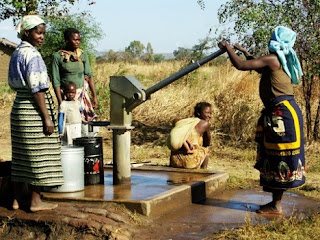Water and Sanitation in Africa
Water and Sanitation in Africa: A Starting Point
My first blog and the idea of writing blogs under the theme of water and sanitation in Africa was inspired by the article produced by Colin McFarlane and Jonathan Silver (2016) where I first encountered the socio-political complexity and inequality of sanitation delivery problems in the Cape Town. That sparked my interest in exploring further in water scarcity and its consequent, multiple effects. Sanitation is the safe disposal of human waste (McFarlane and Silver, 2016). It builds the foundation of having healthy lives for people, while it is not accessible to everyone in some areas in the world or someone in parts of a city. Its importance and complexity pushed me to write about the topic.
Before officially writing about water and sanitation in Africa, I came across the article 'Write about Africa' by Wainaina (2016), and I recognised several difficulties in writing my blogs under this theme. Firstly, as suggested by Wainaina, any work I produce would be referred to the 'real Africa' when people are reading my works. So, the first difficulty is to produce the responsible and carefully thought about contents in my blog, considering multiple definitions, assessments, causes, and implications of sanitation in Africa, with appropriate references. The second problem is to recognise the fact that sanitation is not so much a service delivery problem by the government but more as a social problem affected largely by inequalities and perception. The third problem is my own positionality. As a person who has never been to Africa, especially the cities or areas with poor sanitation, it is hard for me to produce blogs from a remote developed country without going there in person to immerse myself in the environment.
2.6 billion people are lacking the access to improved sanitation (Jewitt, 2011). Insanitation problems be viewed from two perspectives, where there are very few treatment infrastructures and where they are the result of political, economic, and racial inequalities. In the first scenario, the lack of wastewater treatment and infrastructures in many parts of the global south results in the situation where wastewater is discharged into rivers, lakes, and sea without any treatment, resulting in 'a loss of freshwater, food insecurity, destruction of soils, and loos of biodiversity on land as well as in marine environments, global warming and depletion of ozone' (Jewitt, 2011). In areas with huge population, the demand for toilets must be great. Yet municipal governments frequently neglected the sanitary demands of those low-income dwellers in illegal slums (Chaplin, 1999).
In Africa, especially sub-Sahara Africa, the urban population is growing at a faster rate than any other region in the world (Olago, 2019). Take Kenya as an example, water sanitation infrastructures find it hard to keep pace with the rapidly increasing population, resulting in people being forced to have contaminated water from insanitary sources such as wells (Olago, 2019). Situations get worse when there are shallow wells and spring waters in low-income and populated areas, where water is always contaminated by human wastes. While sanitation emphasises the proper disposal of human waste and the delivery process, it always surfaces as a 'social syndrome' where it is a problem of gender, caste, race, ethnicity, and religion (McFarlane and Silver, 2016). In the research by McFarlane and Silver, they suggested that the root of insanitation is not only due to failed attempts but the local government of Cape Town, but also the inextricable social inequalities embedded in the local town (McFarlane and Silver, 2016). In that situation, insanitation belongs with poor people living in the peripheries of the city and those who out of sight.
To improve the sanitation situations in the global south, especially Africa, it is argued by Jewitt that it would be better to draw on sanitation software approaches than hardware approaches in different geographical contexts (1999). Black and Fawcett (2008) advocated for the private sanitation treatment where small sized businesses can be encouraged to empty human waste in towns and slums with poor accessibility. In addition, more geographers need to be engaged in the policy-making progress and the process of sanitation delivery so as to put more efforts regarding the social inequalities embedded in the sanitation problem. I addition, policy makers themselves also need to draw on geographical, especially spatial, socio-economic and cultural understanding of their cities to deliver more sanitation practices to the poor and better sanitation systems (Jewitt, 2011).




You mentioned two case studies, first Kenya water and sanitation infrastructures find it hard to keep pace with the rapidly increasing population. And second is a quote: “the root of insanitation is not only due to failed attempts by the local government of Cape Town, but also the inextricable social inequalities embedded in the local town”. How would you attempt to reconcile the complexities in place specific sanitation challenge, as indicated in Kenya nd Cape Town?
回复删除Water and sanitation issues varies from place to place across the continent of Africa, and it will be good to have specific case studies that express the complexities and variations.
Sorry for this late response. I did not see this comment... My original intention was to use the two examples to illustrate the complexities and variations regarding sanitation challenges in Africa. Maybe I did not make it very clear in my blog, resulting in a little bit of confusion...
删除